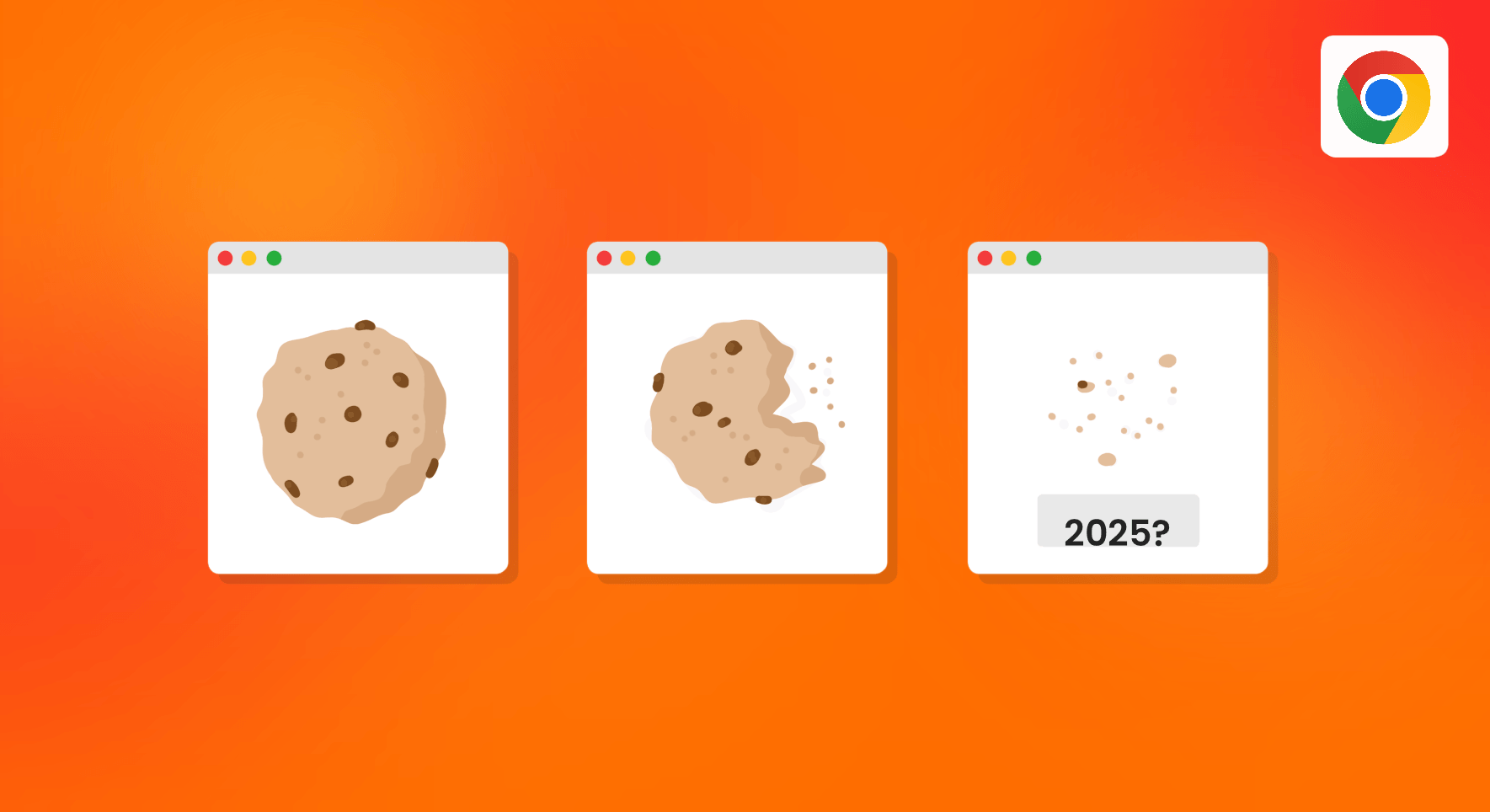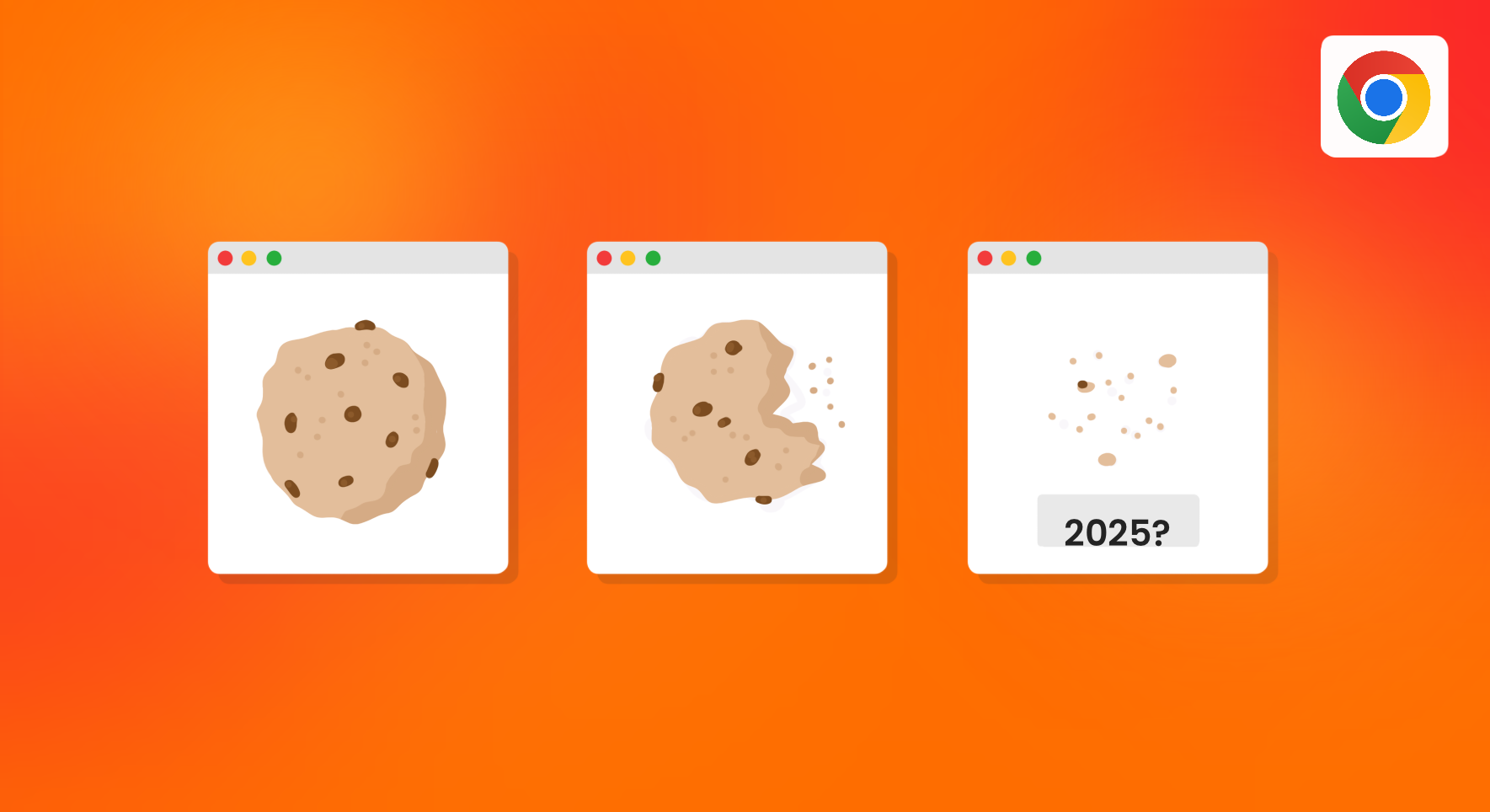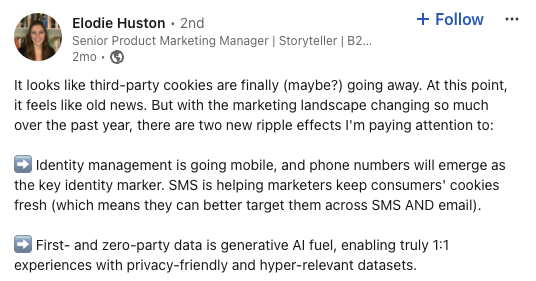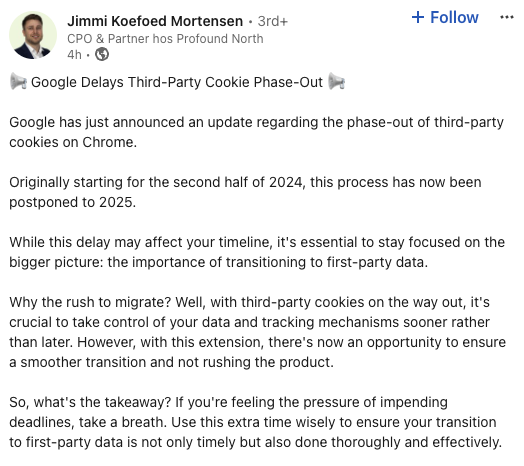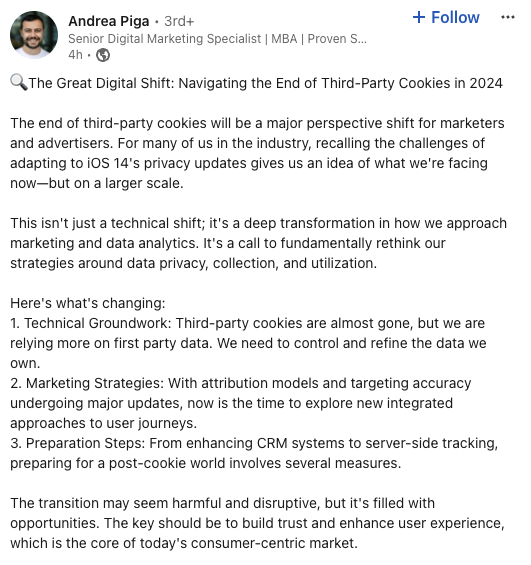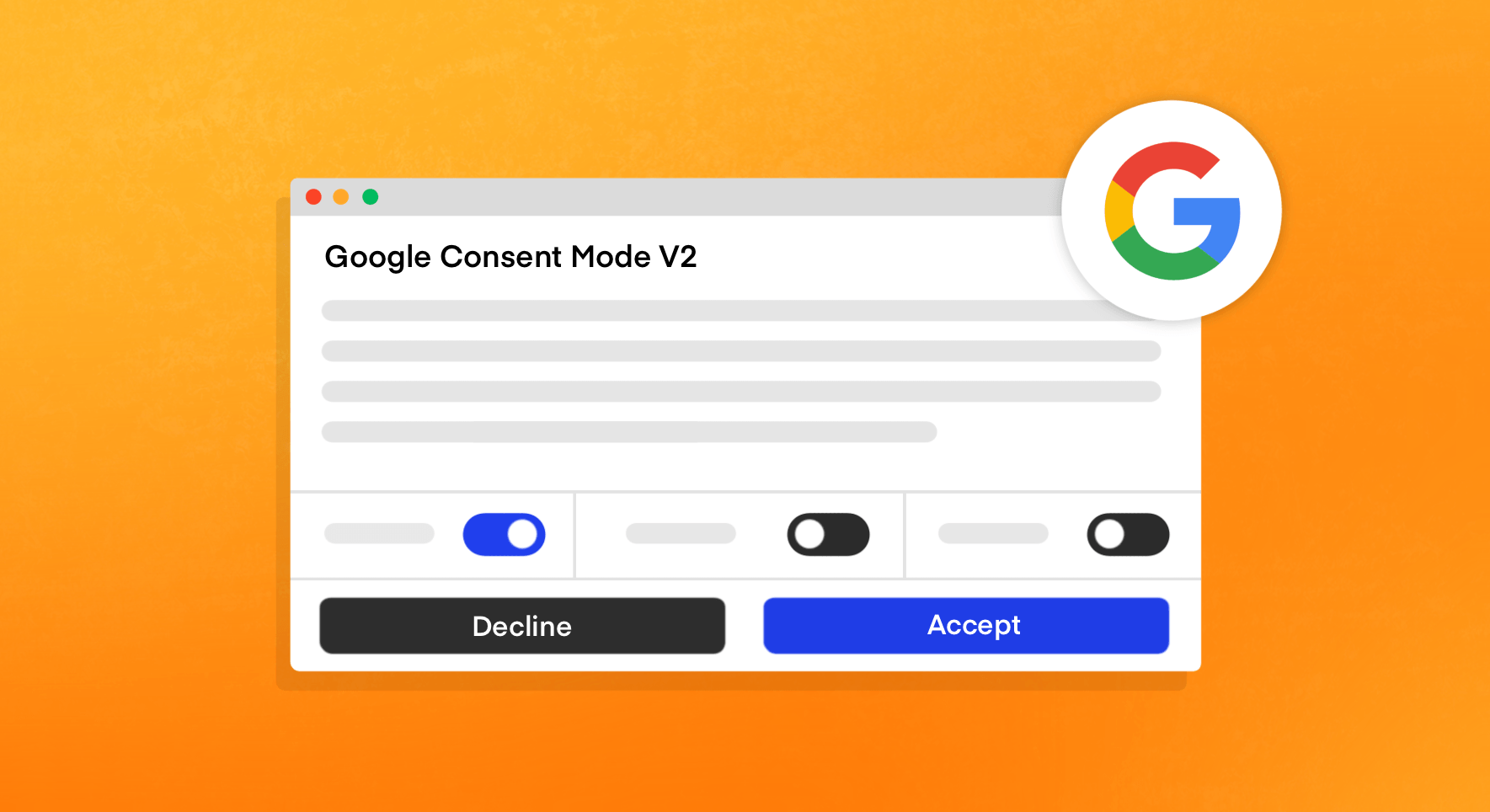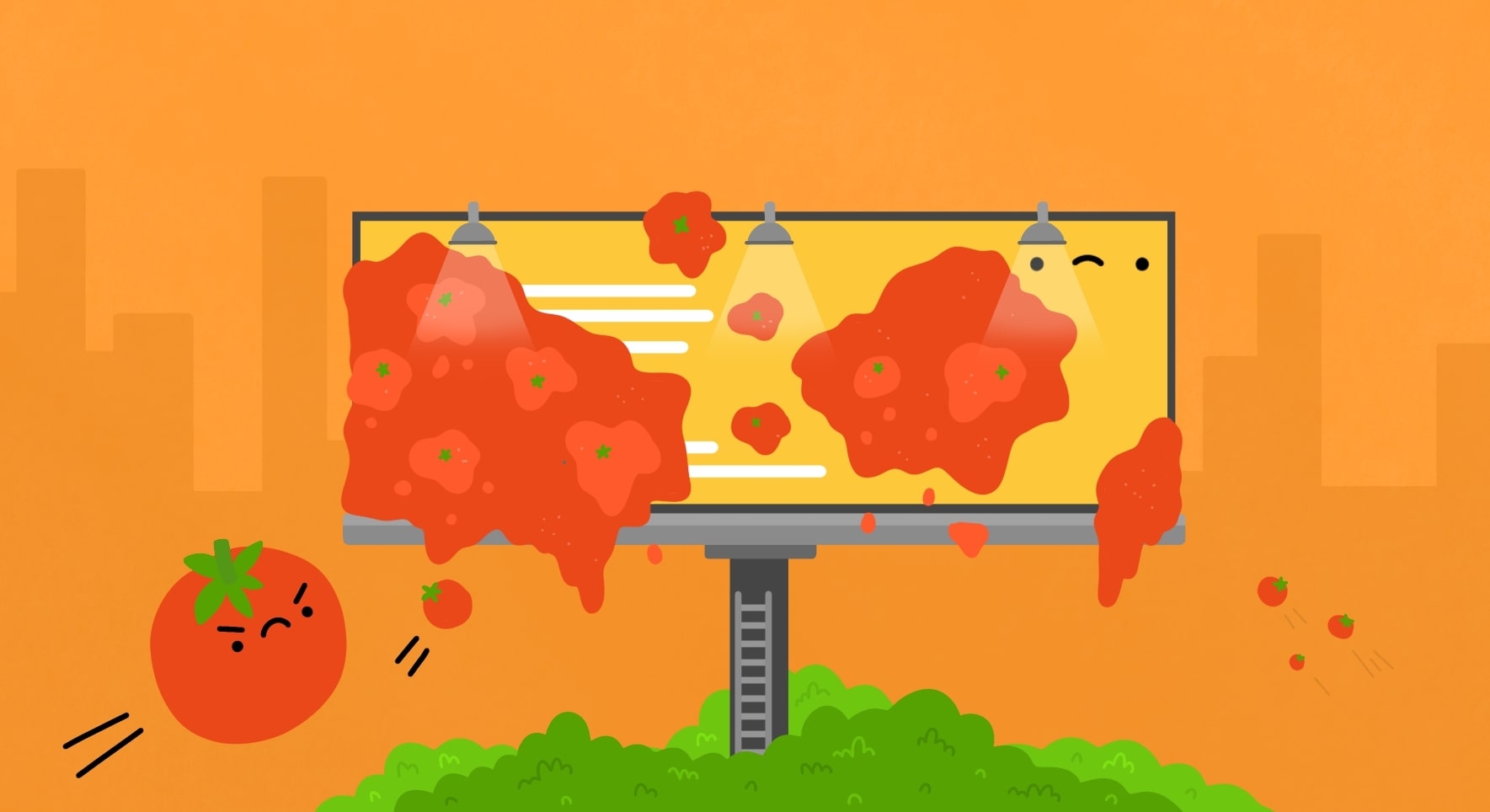Attention all marketers, grandmas, girl scouts, and blue Sesame Street monsters – we have some bad news. In early 2025, the cookie is finally crumbling.
Fortunately for everyone mentioned bar marketers, we’re specifically referring to third-party cookie depreciation here. After several delays and multiple deadline pushbacks, it’s finally happening – Google is officially phasing out third-party cookies on Chrome in early 2025.
Websites and advertisers have been using third-party cookies for years to track site visitors, serve them relevant ads, and improve the overall user experience. They also give marketers more information about what customers are looking at outside of their website, and provide useful information about audience demographics, brand overlap, and customer pain points to name a few.
So, with third-party cookies continuing to depreciate in value until their eventual phase-out for most users in 2025, how can marketers stay ahead of the curve? And what, if anything, will be replacing them?
Let’s talk about all that and more, including:
- Why third-party cookies being phased out
- What marketers are saying about the changes
- Alternative strategies & approaches for marketers to consider
- Actionable steps to ensure PPC marketing is uninterrupted
Why Are Third-Party Cookies Being Phased Out?
Whilst providing a significant amount of insight to marketers, third-party cookies have been raising eyebrows amongst consumers as we move closer towards a privacy-focused browsing experience. These privacy concerns, along with a number of recent browser changes, have diminished the value of third-party cookies over the past few years, with some browsers already blocking third-party cookies by default.
Privacy concerns
Consumers are increasingly aware of third-party cookies, and routinely go to the effort of declining or disabling them on the sites they visit.
In fact, 76% of internet users in the US know how to clear cookies and disable them, despite the fact that less than half (46%) of users from the same study aren’t entirely sure what cookies do.
The idea of being ‘tracked’ across every website you visit on the internet is not an appealing thought for the majority of consumers. Privacy laws such as GDPR have been modified to give users increased agency over their data, and web browsers are moving to enact a privacy-first approach in order to accommodate.
Browser changes
The online privacy landscape has changed over the years, and browsers that adopt a privacy-first policy are growing in popularity.
Major browsers such as Safari and Firefox already block third-party cookies by default, however Google Chrome has historically stood firm as one of the main browsers to allow (and even encourage) the use of third-party cookies.
However, following Chrome’s privacy sandbox update, it too will be joining the club and blocking third-party cookies by default.
Note: Google’s privacy sandbox is an initiative designed to give users complete peace of mind when they browse online, by reducing cross-site and cross-app tracking.
Google has been testing the removal of third-party cookies for 1% of Chrome users since January 2024, with the initial plan to push this out to all Chrome users by the end of 2024. However, this has been pushed back to “early 2025” due to feedback from the UK’s Competition and Markets Authority (CMA).
With Google being… well, Google (and with government authorities not exactly known for their speed) – we can anticipate these goalposts to be moved once again depending on Google’s plans and subsequent approval from the CMA.
One thing remains abundantly clear, though – the death of the third-party cookie is approaching, and marketers who rely on them need to look for alternative approaches.
Advertise to Humans, Not Bots
Save up to 20% of your advertising budget by automatically eliminating fake ad clicks across all paid channels.
Does Third-Party Cookie Depreciation Mean The End of All Cookies?
No, some forms of cookies aren’t going anywhere. Yes, third-party cookies are soon becoming a thing of the past – but if you think all of your cookie-powered marketing efforts will soon be rendered obsolete, you can take a sigh of relief.
Unlike third-party cookies, which are essentially tracking codes placed on a site visitor’s computer that tracks their movement around the internet, first-party cookies are generated and stored on your site visitor’s computer by default when they visit a site – and they aren’t going anywhere. In short:
- First-party cookies = consensual cookies that store basic user data, and remember things such as logins and site preferences.
- Third-party cookies = cookies from other companies that track user movement across the web. Users are largely unaware of the tracking systems they are interacting with in third-party cookies.
Google has previously stated that first-party relationships are “vital”, so it looks like any first-party data you get from your site visitors will remain intact across all browsers.
What Marketers Are Saying (And Doing) About Third-Party Cookie Depreciation
Whilst 60% of marketers recently said they were accelerating their readiness for a cookieless future, the truth is that three in four still heavily rely on third-party cookies for their online advertising strategies.
The truth is, many advertisers still feel unprepared for the full impact of a cookieless landscape and the implications that come with it. Paul Stringer, WARC’s managing editor, stated that “2024 will be a year defined by disruption, uncertainty, and experimentation”.
Let’s look at what marketers think about third-party cookie depreciation, and how they’re preparing for cookieless ad strategies going forward:
- Elodie Huston, Senior Product Marketing Manager at Attentive, is focused on the growing importance of phone numbers as identity markers, and how first-party data can feed into generative AI to create hyper-personalized user experiences.
- Jimmi Koefoed Morensen, CPO & Partner at Profound North, mentions the importance of transitioning to first-party data. He mentions the delay on third-party cookie depreciation from 2024 to 2025 gives marketers more time to enable a smoother transition between data sources.
- Andrea Piga, Senior Marketing Specialist at Callisto, remains positive about the changes and mentions the benefits of controlling and refining our own data in a consumer-centric market.
- Michael Cross, Co-founder of Media.Monks, highlights the troubling fact that the majority of marketers remain unprepared for third-party cookie depreciation. He goes on to champion some key areas to focus on – namely cookieless attribution, the importance of a single source of truth, first-party data strategy, CRM/CDP consolidation, and GA4 consent mode.
What Comes After Third-Party Cookies?
For decades, the third-party cookie has held different elements of the advertising ecosystem together. When it disappears, so will the historical basis for understanding audience behavior online.
For online advertising to survive (and thrive), marketers need to rethink ways to reach and measure audiences.
Third-party cookie depreciation has put a renewed focus on first-party data and the efficacy of other marketing channels in order to understand and access an audience that’s relevant to your business. There’s also ‘enhanced conversions’, which many marketers are hailing as an effective replacement for third-party data.
Let’s take a look:
Utilizing first-party data
First-party data is the customer data you’ve gathered yourself, rather than via third-party sources. Third-party cookie depreciation has put a renewed focus on how marketers are collecting, storing, and using that data effectively.
By engaging directly with your customer base, marketers can get a better understanding of their audience – along with their habits, trends, and pain points. This data can be gathered from a range of different sources, however questionnaires, quizzes, and surveys are the most obvious choice for first-party data gathering.
There’s little point in throwing out a random email asking your audience to complete a quiz whenever you feel like it, as this is likely to do more harm than good. Marketers must remain tactful in order to get valuable first-party information from their customer base, and find natural opportunities to gain insightful information from their audience.
Analyzing other marketing channels
The death of the third-party cookies may shake the foundations of paid marketing campaigns, however other marketing channels will remain largely unaffected.
Marketers who have become overly reliant on paid campaigns will see the largest drop in ROI, as their campaigns will no longer be as accurate or targeted. Without other channels to fall back on, their campaigns will become less effective due to the lack of third-party data.
Marketers who aren’t reliant on one particular channel will be able to gain data from other sources, and diversify their marketing efforts to ensure their customers are being served at every touch point.
The shift away from third-party data gives marketers a chance to take a step back and look for opportunities across the entirety of their marketing channels, and potentially look to strengthen other areas.
Understand Enhanced Conversions
Google defines ‘Enhanced Conversions’ as “a feature that can improve the accuracy of your conversion measurement to unlock more powerful bidding”.
It’s designed to supplement existing conversion tags by sending first-party conversion data from your site to Google in a privacy-first, secure way.
How is this secure? Well, Google uses something called SHA256 – a one-way hashing algorithm that is placed on first-party data (such as email addresses) before they are sent to Google.
Here’s the Enhanced Conversion process:
- A user who’s signed in on Google views an ad – e.g. a YouTube ad.
- The user lands on your website and converts.
- The conversion tag captures a pre-determined field (e.g. email address), hashes the data, and sends it to Google.
- The hashed data is matched against Google’s hashed user data, and a conversion is reported in your ads account.
As the first-party data is hashed, it can be matched with Google user data – even if cookies are blocked. This lets marketers attribute conversions to specific ads, providing actionable insights into their advertising efforts in a cookieless world.
Google has created an article outlining how to set up Enhanced Conversions through GTM – a must-do for marketers looking to drastically improve their PPC data going forward, and to prevent current Google Ads bidding strategies from crumbling.
How to Prepare For Third-Party Cookie Depreciation
Now you know what comes next, it’s important to prepare so your paid media campaigns don’t suffer without cookies. Let’s take a look at a few actionable steps you can take right now to minimize the impact:
- Understand and implement ‘Enhanced Conversions’ (see above!)
- Find out exactly what third-party cookies your website uses, and look for alternative API programs to replace them if necessary (use a cookie scanner tool such as Termly to find out if you need to!)
- Get comfortable with modeled data (creating mathematical or statistical representations of marketing data with the goal of uncovering patterns, relationships, and trends) to replace data gained from third-party sources
Chris Nightingale, Marketing Lead at AO.com, added a few more steps for marketers to consider in an article over at PPClive:
“We must consider a few things to see what’s coming down the road –
- You need to invest in multiple technologies to provide both durability and comprehensives of your conversion data
- You must be agile and ready to experiment & adapt as new solutions are brought to market.
- And as much as it pains me, the future of advertising is swinging more towards conversion modeling and predictions rather than a view that is 100% accurate.”
FAQs
Do websites still require consent without third-party cookies?
Yes – the end of third-party cookies does not mean the end of requirements for user consent, as third-party cookies are not the only way to determine a user’s intentions and identity across the web.
Unless the major web browsers remove support for all types of website tracking technologies, the European Union’s General Data Protection Regulation (GDPR) and other data protection laws across the world will mean websites will have to request consent in order to comply with the law. (You can learn more about the updates to consent and what consent mode v2 means for marketers in our guide).
When will third-party cookies be gone?
Google Chrome plans to entirely phase out third-party cookies by Q1 2025 – however this is subject to change based on approval from the CMA.
What’s the difference between first-party and third-party cookies?
In short, first-party cookies come from the website you visit, whereas third-party cookies track your activity across different websites.
How will third-party cookie depreciation affect online advertising?
Targeting and ad measurement will undoubtedly become more difficult with the removal of third-party cookies. However, new technologies are being developed to counteract their removal, and marketers who embrace them will still see strong performance in their targeted ad campaigns.
What is replacing third-party cookies?
Google’s Privacy Sandbox initiative is working on several APIs, and a few other measures such as Enhanced Conversions, to replace third-party cookies and make the transition from third-party cookies smoother. Contextual targeting, privacy-first conversion measurement, and encrypted tokens are all being developed to replace third-party cookies.
Final Thoughts
As ad budgets tighten and shareholder expectations continue to grow, third-party cookie depreciation can be disheartening for advertisers looking to maximize their ROI through precise and effective ad targeting.
Yet, for those willing to embrace new methods – be it Enhanced Conversions, investing in modeled data, or creating an effective strategy to capture first-party data – the removal of third-party cookies presents the unique opportunity to create a future-proofed targeting and data acquisition strategy that stands the test of time (or at least until Google next decides to change everything!)
For those who are searching for ways to take control of their ad spend and optimize their paid marketing efforts, one pressing issue to be aware of is invalid traffic (IVT). IVT affects every paid online marketing campaign, with 1 in 12 clicks being attributed to bots or other sources of fake traffic.
IVT vastly reduces the effectiveness of your ad campaigns – and by removing invalid traffic at the source, you can save up to 20% on your marketing budget.
Get a free 14-day trial (no obligation) with Lunio to see exactly how much invalid traffic is affecting your PPC success – and get the full picture on how much you could save by eliminating it. Book a demo to get started today.
Advertise to Humans, Not Bots
Save up to 20% of your advertising budget by automatically eliminating fake ad clicks across all paid channels.
